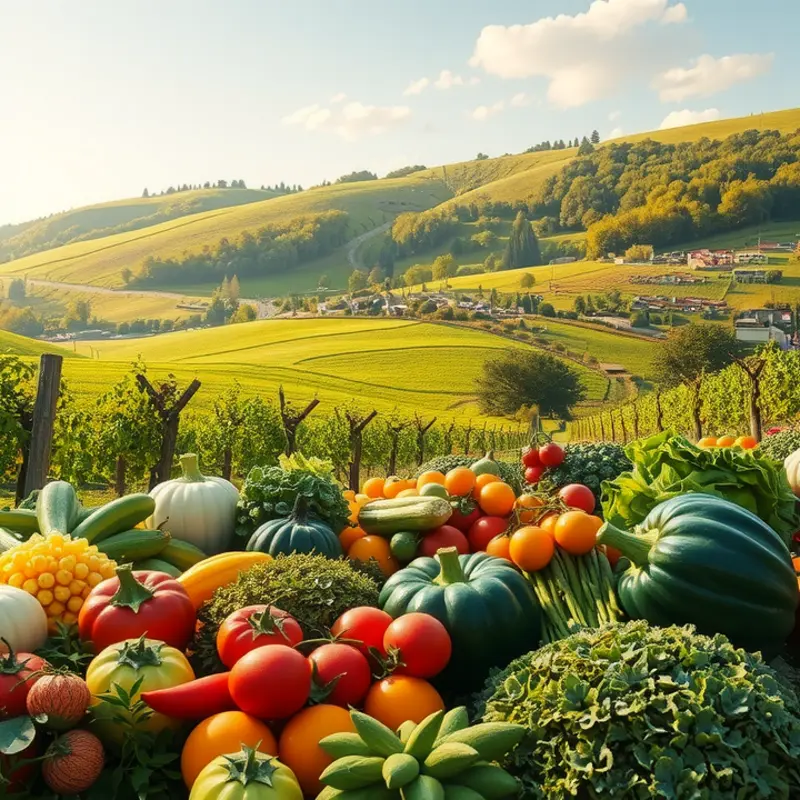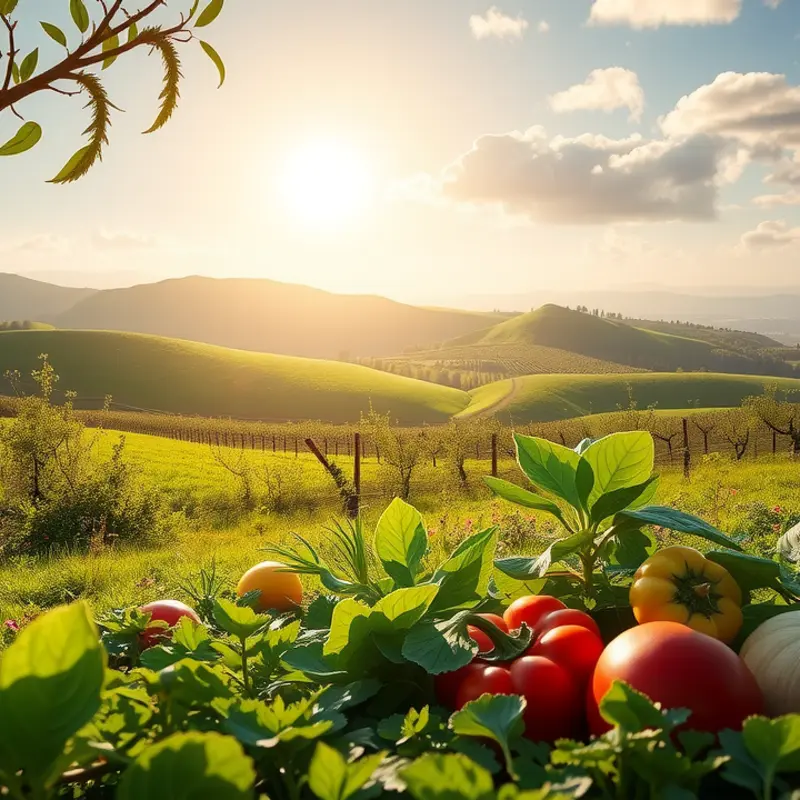Embracing sustainable food traditions allows individuals to reconnect with nature and foster a healthier lifestyle for themselves and the planet. By integrating these practices into daily life, you can enhance well-being while reducing your environmental footprint. This article delves into the significance of sustainable culinary methods and offers actionable insights tailored for those striving to make eco-friendly food choices.
Roots of Sustainability: Understanding Traditional Practices

Traditional food practices offer a wellspring of sustainability insights. Many indigenous cultures have long nurtured the land, practicing agriculture methods that harmonize with nature. These communities often prioritize soil health through practices like crop rotation, which maintains soil fertility by alternating the crops grown on a piece of land. By growing different plants, farmers can naturally replenish soil nutrients, prevent soil erosion, and reduce pest buildups, leading to thriving ecosystems.
Permaculture principles further exemplify sustainable living. Drawing from the observation of natural ecosystems, permaculture emphasizes multifunctional design, creating agricultural systems that are not only efficient but also regenerative. By using methods such as companion planting and water recycling, permaculture advocates for a way of living that reduces waste and works with, rather than against, the natural world.
Biodiversity stands as a cornerstone of these traditional practices. Indigenous knowledge often involves cultivating a variety of crops, which creates a resilient agricultural environment. Diverse fields are better equipped to withstand pests and climate disruptions, as biological diversity breeds balance and natural pest control. Such practices are explored further in our biodiversity-supportive diets guide, emphasizing the health of both people and the planet.
The concept of seasonal eating connects humans deeply to their environments. Consuming foods in alignment with their natural growing cycles not only ensures peak flavor and nutrition but also minimizes environmental impact by reducing the need for artificial growing conditions and long-distance transportation. This practice encourages local sourcing, reducing carbon footprints and strengthening community ties.
Local sourcing often intertwines with indigenous culinary arts, which celebrate the unique flavors of native ingredients while fostering an intimate relationship with the land. These traditions underscore the importance of understanding local ecosystems to sustainably harvest what nature abundantly offers.
Central to these practices is respect for the earth and its resources, promoting a mindful eating approach that considers the origins of our food and its journey to our plates. For those exploring this pathway, our blog on conscious eating and mindful habits provides valuable insights into integrating mindfulness into daily meals.
Embracing traditional food practices is more than a nod to the past; it is a burgeoning path to a sustainable future. Through the wisdom of ancient methods, modern societies can rediscover how to live in a balanced relationship with our planet. Such practices remind us that sustainability and nourishment are most effectively achieved through unity with nature.
Culinary Practices for a Greener Future

Embracing sustainable food practices is crucial in creating a positive impact on our planet. One significant step is adopting plant-based diets, which favor the environment by using fewer natural resources. Moving towards meals rich in fruits, vegetables, grains, and legumes helps reduce carbon footprints significantly.
To minimize food waste, consider simple practices like balancing portions and applying efficient food storage techniques. Peruse these eco-friendly produce bag ideas to further reduce waste in your kitchen. Engaging in collective efforts like community composting offers another avenue for reducing waste and enriching soil.
Utilizing local produce not only brings fresh flavors but also supports local economies. Seasonal ingredients ensure that our choices are aligned with the earth’s natural cycles. Visiting farmer’s markets and forming good relations with local farmers bridges the community and fosters trust. This practice enhances the availability of nutritious produce and encourages farmers to continue sustainable agriculture practices.
Sample Recipe: Spring Vegetable Stir-fry
A delightful recipe with minimal environmental impact, focusing on seasonal produce readily available from local sources.
Ingredients:
- 2 cups of snow peas
- 1 cup bell peppers, sliced
- 1 cup carrots, julienned
- 2 tablespoons soy sauce
- 1 tablespoon olive oil
- 2 cloves garlic, minced
Instructions:
- Heat olive oil in a pan over medium heat.
- Add garlic and sauté until fragrant.
- Toss in snow peas, bell peppers, and carrots. Stir-fry for 5-7 minutes.
- Drizzle soy sauce and mix well.
- Serve hot with steamed brown rice or quinoa.
This versatile stir-fry illustrates how seasonal vegetables can transform into a delicious meal, promoting mindfulness about eating patterns and personal well-being.
Beyond individual practices, community-oriented efforts like forming buyer cooperatives can expand sustainable practices. By partnering with local artisans, one gains an appreciation for cultural culinary heritage while promoting the sustainability ethos.
As individuals, adopting these mindful approaches not only ensures our meals are delightful, but they also inspire a worldwide community of sustainability enthusiasts.
Final words
Incorporating sustainable food traditions into your daily life is not just a choice; it’s a commitment to nurturing the earth and supporting communities. By embracing local, seasonal ingredients and traditional practices, you enhance personal health while positively impacting the planet. Together, these efforts create a ripple effect, inspiring others to adopt similar eco-conscious habits. As you venture into this delicious journey of sustainability, remember that every small choice matters. Celebrate the beauty of nature and its bounty by becoming an advocate for sustainable living, fostering a deeper connection with the food you consume.








